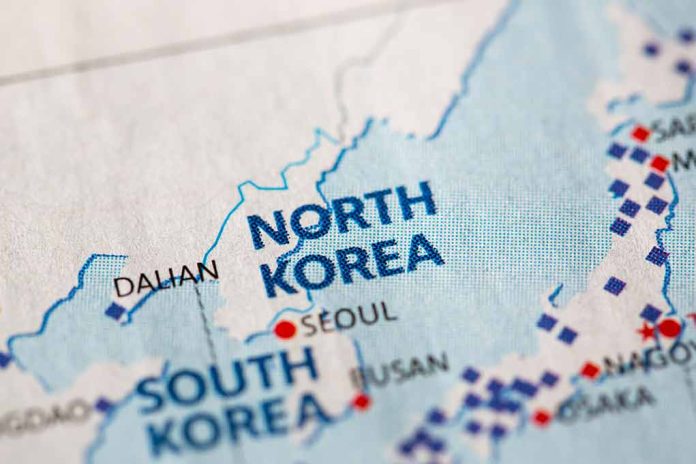
North Korea’s new 5,000-tonne destroyer signals an ambitious military sea change, but will this escalation alter the regional balance?
Quick Takes
- North Korea launched a new 5,000-ton Choe Hyon-class destroyer.
- The destroyer underwent missile tests under Kim Jong Un’s observation.
- North Korea plans to acquire a nuclear-powered submarine.
- Potential North Korea-Russia cooperation has been suggested.
Naval Advancements
North Korea unveiled the Choe Hyon-class destroyer, showcasing significant naval advancements. The new vessel, weighing in at 5,000 tonnes, represents a formidable addition to the nation’s military arsenal. Over the course of two days, the ship underwent comprehensive tests, including firings of supersonic missiles and a 127 mm naval gun, highlighting its combat-ready state. Kim Jong Un underscored the importance of bolstering North Korea’s naval capabilities, viewing this ship as a stepping stone toward further military growth.
Military experts note the destroyer’s features exhibit a striking resemblance to Russian designs, hinting at potential cooperation. Reports suggest Russia provided technology to North Korea, possibly as a quid pro quo for North Korea’s support in Ukraine. South Korea’s detection of strengthened infrastructure at the Tumen River aims to solidify this alliance with a new bridge, further indicating deepening ties between Pyongyang and Moscow.
Nuclear Aspirations
Kim Jong Un declared the construction of a nuclear-powered submarine to be a priority. Such development aligns with his strategy to ensure North Korea’s deterrence capabilities remain robust, specifically in light of what he sees as “escalating US-led hostilities.” Further expanding into blue-water naval operations is also a part of North Korea’s future military roadmap. Kim described the current developments as “a breakthrough” in the nation’s path toward enhanced global military standing.
Amid these plans, concerns about further ballistic missile testing add another layer of complexity to regional stability. In March, North Korea fired short-range ballistic missiles after U.S.-South Korean military drills, emphasizing its commitment to expanding its strike capabilities.
Strategic Implications
The newly launched destroyer raises important strategic questions for Northeast Asia. Kim Jong Un’s pursuit of “an offensive and proactive defense posture” implies a shift in how North Korea envisions its military engagements, prioritizing strong, preemptive strike capabilities. As the country strives to establish a well-rounded naval force, the implications for regional security and geopolitical dynamics are significant.
As North Korea continues upgrading its military infrastructure, neighboring countries and allies in the region must navigate a complex web of diplomatic relations and defense strategies. Given the growing alignment between North Korea and Russia, the international community faces a multifaceted challenge in maintaining peace and security in the region.













